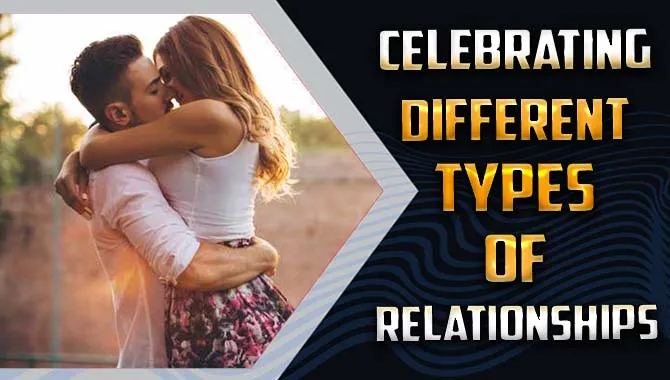Quick Summary: Facing common relationship problems like communication breakdowns or trust issues? This guide offers straightforward, actionable solutions to strengthen your connections, foster understanding, and build healthier, happier relationships. Learn practical tips to tackle challenges head-on and cultivate more fulfilling bonds with friends, partners, and family.
Best Relationship Advice Problems: Essential Solutions
Do you ever feel like you’re speaking a different language than your partner or best friend? It’s easy to get lost in misunderstandings, worries about trust, or the simple daily friction that can wear down even the strongest connections. Many of us face similar hurdles in our relationships, from friendships to romantic partnerships. The good news is that these common relationship problems aren’t roadblocks; they’re opportunities for growth. This guide dives into the most frequent issues and offers clear, easy-to-follow solutions. We’ll break down complex feelings into actionable steps, helping you build deeper understanding and lasting harmony in all your relationships. Let’s explore how to turn friction into connection.
Understanding Common Relationship Problems
Relationships, whether with friends, family, or romantic partners, are a beautiful part of life. They bring joy, support, and companionship. However, like any human endeavor, they aren’t always smooth sailing. Recognizing the common bumps in the road is the first step toward navigating them successfully. These problems often stem from a few core areas: communication, trust, differing expectations, and managing conflict. When we understand the root cause, we can more effectively find solutions that strengthen our bonds rather than break them.
The Communication Conundrum
Perhaps the most frequent culprit in relationship struggles is ineffective communication. This isn’t just about talking; it’s about truly hearing and understanding each other. When communication breaks down, it can lead to feelings of frustration, loneliness, and resentment.
Common communication issues include:
- Not listening actively: Hearing words but not grasping the underlying message or emotions.
- Making assumptions: Believing you know what the other person is thinking or feeling without asking.
- Avoiding difficult conversations: Putting off important talks due to fear of conflict or discomfort.
- Using blame or criticism: Phrases starting with “You always…” or “You never…” can shut down dialogue.
- Not expressing needs clearly: Hoping others will intuit what you want or need.
Building and Maintaining Trust
Trust is the bedrock of any healthy relationship. Without it, insecurity and doubt can take root, causing significant damage. Trust can be broken in many ways, from dishonesty and betrayal to simple unreliability.
Factors that erode trust:
- Broken promises
- Dishonesty or deception
- Lack of consistency
- Disrespecting boundaries
- Going behind someone’s back
Differing Expectations
We all enter relationships with certain expectations, sometimes unstated. These can be about how much time someone should spend with us, the level of support they should offer, or how conflicts should be handled. When these expectations clash with reality, it can cause disappointment and strain.
Examples of differing expectations:
- One person expects frequent communication, while the other prefers less frequent, deeper conversations.
- Differing views on financial management in a partnership.
- Expectations about how holidays or social events should be spent.
- Varying ideas on commitment levels in dating.
Navigating Conflict
Conflict is inevitable. What matters is not avoiding it altogether, but learning how to handle it constructively. Unresolved or poorly managed conflicts can escalate and cause lasting damage.
Unhealthy conflict includes:
- Yelling or aggression
- Stonewalling or refusing to engage
- Bringing up past grievances
- Personal attacks or insults
- Refusal to compromise
Essential Solutions for Common Relationship Problems
Now that we’ve identified some of the most common relationship problems, let’s explore practical, beginner-friendly solutions. These strategies are designed to be simple to understand and implement, helping you build stronger, more resilient connections.
Solution 1: Mastering Active Listening
Active listening is a skill that can transform your conversations. It’s about being fully present and engaged when someone is speaking, showing them that you value their thoughts and feelings.
How to practice active listening:
- Make Eye Contact: This shows you are engaged and attentive.
- Nod and Use Verbal Cues: Small nods or phrases like “I see,” “Uh-huh,” or “Go on” encourage the speaker.
- Don’t Interrupt: Allow the other person to finish their thoughts completely before you respond.
- Ask Clarifying Questions: Phrases like “Can you tell me more about that?” or “What did you mean when you said…?” ensure you understand.
- Paraphrase and Summarize: Repeat what you’ve heard in your own words. For example, “So, if I’m understanding correctly, you’re feeling frustrated because…” This confirms understanding and allows for correction if you’ve missed something.
- Observe Non-Verbal Cues: Pay attention to body language, tone of voice, and facial expressions, as they often convey more than words alone.
Solution 2: Cultivating Open and Honest Communication
Beyond listening, it’s crucial to express yourself clearly and honestly. This involves sharing your thoughts, feelings, and needs in a way that is respectful and constructive.
Tips for open communication:
- Use “I” Statements: Frame your feelings from your perspective. Instead of “You make me angry,” try “I feel angry when this happens.”
- Be Specific: Clearly articulate the issue and your needs. Instead of “You never help,” try “I would appreciate it if you could help with the dishes tonight.”
- Choose the Right Time and Place: Address sensitive topics when both of you are calm and have time to talk without distractions.
- Be Honest but Kind: Truthfulness is important, but delivering it with empathy and respect maintains the connection.
- Regular Check-ins: Make time for open conversations, not just when problems arise. Ask about each other’s day, feelings, and what’s on their mind.
Solution 3: Rebuilding and Strengthening Trust
Trust is hard to earn and easy to lose. If trust has been damaged, rebuilding it requires consistent effort, patience, and transparency from the person who broke it. The person who was hurt needs to be willing to allow for repair.
Steps to rebuild trust:
- Acknowledge the Hurt: The person who broke trust must sincerely apologize and acknowledge the pain they’ve caused.
- Take Responsibility: Avoid making excuses. Own your actions and their consequences.
- Be Transparent: Open up about your actions and whereabouts. If necessary, provide proof or reassurance.
- Be Consistent: Actions speak louder than words. Consistently demonstrate reliability and integrity over time. This is a marathon, not a sprint.
- Respect Boundaries: Pay close attention to the other person’s boundaries and make a conscious effort to respect them.
- Patience: Rebuilding trust takes time. Be patient with the process and with the other person’s healing.
Solution 4: Aligning Expectations
Understanding and discussing expectations can prevent many misunderstandings. It’s about getting on the same page about what each person hopes for and expects from the relationship.
How to align expectations:
- Express Your Expectations Clearly: Don’t assume your partner or friend knows what you envision for the relationship.
- Ask About Their Expectations: Show genuine interest in what they are looking for. What are their needs and desires?
- Find Common Ground: Look for areas where your expectations overlap and discuss differences respectfully.
- Be Realistic: Understand that no one is perfect, and relationships require compromise.
- Revisit Expectations: As people and situations change, so can expectations. It’s healthy to have periodic conversations to ensure you’re still aligned.
Solution 5: Constructive Conflict Resolution
Learning to disagree without damaging the relationship is a vital skill. Constructive conflict focuses on solving the problem, not winning the argument or hurting the other person.
Strategies for constructive conflict resolution:
- Stay Calm: If emotions run high, take a break and revisit the conversation when you’re both calmer.
- Focus on the Issue: Address the specific problem at hand, rather than attacking the person or bringing up unrelated past issues.
- Seek to Understand: Try to see the situation from the other person’s point of view. What are their underlying concerns?
- Find Solutions Together: Brainstorm potential solutions that can work for both of you. Compromise is often key.
- Agree to Disagree (Sometimes): If an issue cannot be resolved, it might be necessary to agree to disagree respectfully, especially on non-critical matters.
- Repair After Conflict: Once a conflict is resolved, take time to reconnect and reaffirm your commitment to the relationship. A simple “I’m glad we worked this out” can go a long way.
Tools and Techniques for Stronger Relationships
Beyond general advice, there are specific tools and techniques that can be incredibly helpful in understanding and improving your relationships. These can provide a structured way to address issues and build deeper connection.
The “Gottman Seven Principles for Making Marriage Work” Framework
Dr. John Gottman, a renowned relationship researcher, has identified key principles that contribute to strong, lasting relationships. While often applied to marriages, these principles are beneficial for any significant relationship.
Key Principles:
- Deepen Your Love Maps: Know your partner’s inner world – their hopes, fears, dreams, and background.
- Nurture Your Fondness and Admiration: Regularly express appreciation and positive regard for your partner.
- Turn Toward Each Other Instead of Away: Respond positively to your partner’s bids for connection, no matter how small.
- Let Your Partner Influence You: Be open to your partner’s perspective and willing to compromise. It’s crucial for men in particular to accept influence from their partners.
- Solve Your Solvable Problems: Learn to identify and work through specific issues effectively.
- Master Conflict: Turn conflict into opportunities for connection and problem-solving. (As discussed in Solution 5).
- Create Shared Meaning: Build a sense of shared purpose and vision for your life together.
The Gottman Institute offers extensive resources and research on relationship health, including tools for communication and conflict resolution. You can explore their evidence-based approaches at The Gottman Institute website.
The Art of Compromise
Compromise is the give-and-take necessary for any relationship to thrive. It means both individuals are willing to adjust their desires or plans to accommodate the other person.
Compromise in action:
Imagine you and your partner want to go on vacation. You prefer a relaxing beach, while your partner dreams of an adventurous mountain hike. A win-lose scenario would be one person getting their way, leaving the other disappointed. A compromise might be to alternate vacation types each year, or to find a destination that offers both beach access and hiking trails.
| Scenario | Unhealthy Approach | Healthy Compromise |
|---|---|---|
| Weekend Plans | “We’re going to my family’s so you can’t see yours.” | “How about we spend Saturday with my family and Sunday with yours? We can also plan a separate outing next week.” |
| Decision Making | One person makes all the decisions for the couple. | Both individuals voice their preferences and work together to find a solution that considers both needs, even if it’s not ideal for either. |
| Personal Space | Ignoring the need for alone time or feeling resentful when it’s requested. | Communicating needs for personal space and respecting those boundaries, understanding it strengthens the relationship. |
Empathy: Walking in Their Shoes
Empathy is the ability to understand and share the feelings of another. It’s a powerful tool for building connection and resolving conflict because it helps you see the situation from the other person’s perspective.
Developing empathy:
- Listen Without Judgment: Try to set aside your own biases and simply hear what the other person is experiencing.
- Imagine Their Feelings: Ask yourself, “How would I feel if I were in their situation?”
- Validate Their Emotions: Even if you don’t agree with their actions or perspective, acknowledge that their feelings are real for them. Phrases like “I can see why you would feel that way” are helpful.
- Ask Open-Ended Questions: Encourage them to share more about their feelings and experiences.
Practicing empathy can significantly reduce misunderstandings and foster a deeper sense of connection. It’s a cornerstone of emotional intelligence, a skill that can be learned and improved over time. For more on developing emotional intelligence, resources from institutions like UC Berkeley’s Greater Good Science Center offer valuable insights.
The Power of Appreciation
Often, we focus more on what’s going wrong in a relationship rather than what’s going right. Regularly expressing appreciation can shift the entire dynamic, fostering positivity and reinforcing good behavior.
Ways to show appreciation:
- Verbal “Thank You”: A simple, sincere thank you for big or small things makes a difference.
- Positive Affirmations: Tell your partner or friend what you admire about them. “I really appreciate your patience,” or “You always know how to make me laugh.”
- Acts of Service: Doing something thoughtful for them without being asked.
- Written Notes: A handwritten note or text expressing gratitude can be very impactful.
Addressing Specific Relationship Dynamics
While the core principles apply broadly, different relationship dynamics might present unique challenges. Understanding these nuances can help tailor your approach.
Friendships: The Foundation of Support
Friendships are vital for our well-being. They offer companionship, fun, and a non-romantic form of intimacy. Common issues in friendships include feeling unappreciated, growing apart, or dealing with jealousy.
Solutions for friendship problems:
- Invest Time: Friendships, like any relationship, need nurturing. Make an effort to connect regularly, even if it’s just a quick call or text.
- Be a Good Listener: Offer empathetic support when your friend is going through a tough time.
- Communicate Boundaries: If you need space or if a certain behavior is bothering you, communicate it kindly but clearly.
- Celebrate Successes: Be genuinely happy for your friends’ achievements and offer encouragement.
- Address Issues Directly: If a misunderstanding arises, try to talk it through rather than letting resentment build.
Romantic Relationships: Navigating Intimacy and Partnership
Romantic relationships involve a deeper level of intimacy, commitment, and shared life. They can be incredibly rewarding but also present unique challenges related to differing life goals, finances, intimacy, and external pressures.
Solutions for romantic relationship problems:
Many of the general solutions apply here, but with added emphasis:
- Prioritize Quality Time: Schedule regular dates or dedicated time to connect without distractions.
- Discuss Expectations About the Future: Ensure you’re both on the same page regarding commitment, marriage, family, and life goals.
- Manage Finances Collaboratively: Create a budget and financial plan together. Open communication about money is key to preventing stress.
- Maintain Intimacy (Emotional and Physical): Nurture both your emotional connection through deep conversations and your physical connection through affection and intimacy.
- Support Individual Growth: Encourage each other’s personal goals and dreams, even if they differ.
Man-Woman Relationships: Bridging Understanding Gaps
While individual personalities are far more influential than gender, societal conditioning and common ways of approaching problems can sometimes create misunderstandings between men and women. These are generalizations and don’t apply to everyone.
Bridging understanding:
- Understand Communication Styles: Often, women may focus more on emotional expression and connection in conversation, while men might focus more on problem-solving. Recognize these differences without judgment and adapt your approach. If your partner wants to vent, listen and offer support rather than jumping straight to solutions. If they want solutions, provide them.






